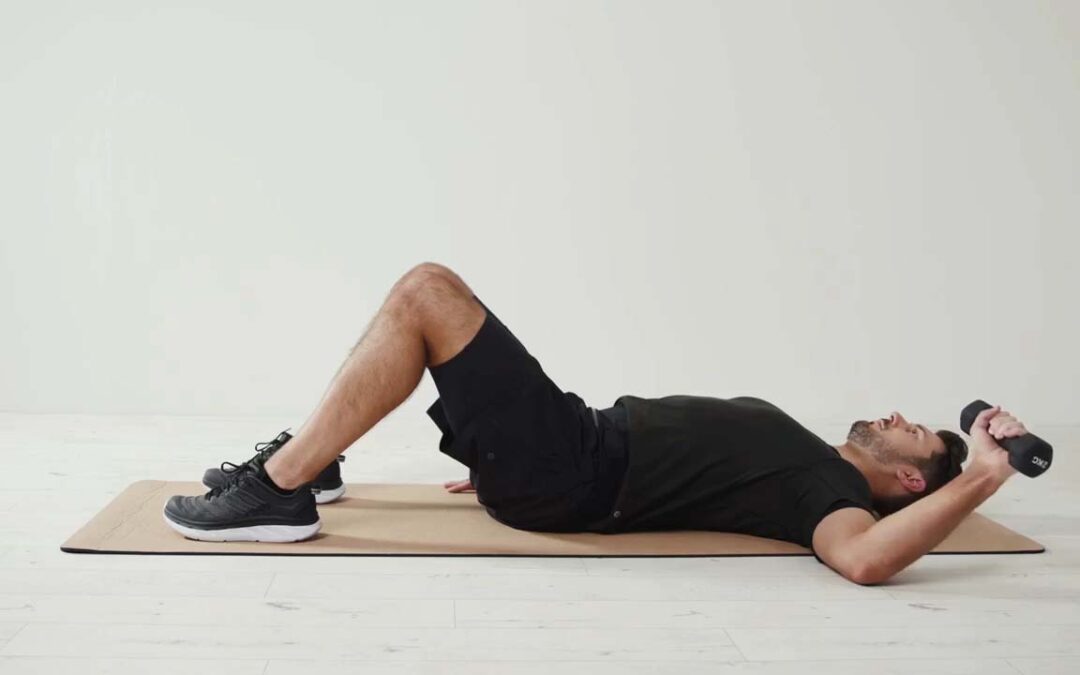Shoulder pain and limited mobility can significantly impact our daily activities and overall quality of life. If you’re experiencing shoulder issues, incorporating targeted exercises into your physiotherapy routine can help strengthen the muscles and improve range of motion. One such exercise is shoulder internal rotation supine with weight. In this step-by-step guide, we will walk you through the proper technique and benefits of performing this exercise.
What readers will learn by reading this article:
- The role of shoulder internal rotation supine in shoulder health and mobility.
- The benefits of using weights for shoulder physiotherapy.
- How to properly perform shoulder internal rotation exercise with a weight.
Understanding the Shoulder Internal Rotation Exercise
Shoulder internal rotation refers to the movement of rotating your arm inwardly towards your body. This exercise primarily targets the subscapularis muscle, which is one of the four muscles that make up the rotator cuff. The rotator cuff muscles play a crucial role in stabilizing the shoulder joint and facilitating various movements.
Performing shoulder internal rotation exercises helps promote shoulder health and mobility by strengthening the rotator cuff muscles and improving their flexibility. This exercise is particularly beneficial for individuals recovering from shoulder injuries or those who want to prevent future shoulder issues.
Benefits of Weights for Shoulder Exercises
Weights are effective tools for shoulder physiotherapy exercises. They offer several advantages over traditional weights or machines. Firstly, resistance bands allow for a wide range of motion, enabling you to perform exercises that mimic natural movements. They also provide variable resistance throughout the entire range, making the exercise more challenging at the peak of the movement.
Using resistance bands for shoulder internal rotation exercises is especially beneficial as they provide a controlled and targeted resistance that isolates the specific muscles involved. This helps in strengthening the rotator cuff muscles and improving their capacity to stabilize the shoulder joint.
When selecting a resistance band for shoulder exercises, it’s important to choose one that suits your current strength and fitness level. There are different types of resistance bands available, such as loop bands, tube bands, and flat bands. Loop bands are a popular choice for shoulder internal rotation exercises as they provide a comfortable grip and allow for a smooth movement.
Use of Merlin Physio App for Shoulder Internal Rotation Exercise
The Merlin Physiotherapy app is a valuable tool for physiotherapists and patients, and it can be particularly helpful for exercises like Shoulder Internal Rotation. Here’s how the app can assist with this exercise:
- Guided Instructions: The app can provide step-by-step instructions for performing the Shoulder Internal Rotation exercise. It can include visual aids or video demonstrations to ensure that patients understand the correct form and technique, reducing the risk of injury.
- Progress Tracking: The app allows physiotherapists to record the starting point of a patient’s shoulder internal rotation and monitor their progress over time. This data is crucial for tailoring the exercise routine to the patient’s specific needs.
- Customized Exercise Plans: Based on the patient’s initial assessment and progress, the app can generate a personalized exercise plan. It can recommend the appropriate number of repetitions, sets, and the level of resistance for the exercise.
- Real-time Feedback: During the exercise, the app can provide real-time feedback to the patient. For instance, it can use AI to assess the quality of their movements and offer suggestions for improvement, ensuring that they perform the exercise correctly and effectively.
Performing Shoulder Internal Rotation Exercise
Now that you are set up correctly, let’s dive into the steps of performing shoulder internal rotation exercise with a resistance band:
- Start with your arm extended straight out in front of you, parallel to the floor. Your elbow should be bent at a 90-degree angle, and your forearm should be perpendicular to the floor.
- Keeping your upper arm still and close to your body, slowly rotate your forearm inwardly, bringing your hand towards your belly button.
- Pause for a moment at the end of the movement, feeling the contraction in your subscapularis muscle.
- Slowly reverse the movement, returning your forearm to the starting position.
- Repeat the exercise for the prescribed number of repetitions, maintaining control and focusing on proper form throughout.
It’s important to note that during the exercise, you should avoid jerky movements or using momentum to swing your arm. Instead, focus on a smooth and controlled motion, ensuring that the targeted muscles are engaged throughout the entire range of motion.
Variations and Modifications
If you have limited range of motion or are recovering from a shoulder injury, you can modify the exercise to suit your needs. Here are a few variations:
- Use a lighter resistance band or adjust the band tension by gripping it closer to the anchor point.
- Perform the exercise with your elbow supported on a table or a rolled-up towel to reduce strain on the shoulder joint.
- Start with a smaller range of motion and gradually increase it as your flexibility improves.
Remember, it’s essential to listen to your body and work within your comfort zone. If you experience pain or discomfort, stop the exercise and consult with a healthcare professional or a physiotherapist.
Repetitions, Sets, and Progressive Overload
The number of repetitions and sets you perform depends on your fitness level and specific goals. As a general guideline, beginners can start with 2-3 sets of 10-12 repetitions. As you become more comfortable and stronger, you can gradually increase the intensity by adding more repetitions or sets.
To continue making progress and challenging your muscles, it’s important to incorporate the principle of progressive overload. This means gradually increasing the resistance over time. You can achieve progressive overload by using a band with higher tension or by positioning yourself farther away from the anchor point to increase the resistance.
Safety Tips and Precautions
To ensure a safe and effective shoulder internal rotation exercise, keep the following tips in mind:
- Warm up before starting the exercise to prepare your muscles and joints for the movement.
- If you have a pre-existing shoulder condition or injury, consult with a healthcare professional or a physiotherapist before attempting this exercise.
- Avoid forcing the movement or pushing through pain. If you experience any discomfort, stop the exercise and seek appropriate guidance.
- Focus on maintaining proper form and technique throughout the exercise. Avoid compensating with other muscles or using excessive momentum.
- If you’re unsure about the correct execution of the exercise, consider working with a qualified physiotherapist who can provide personalized guidance and support.
By following these safety tips, you can minimize the risk of injury and maximize the benefits of the shoulder internal rotation exercise.
Progression and Advanced Exercises
Once you have mastered the basic shoulder internal rotation exercise with a resistance band, you can progress to more advanced variations. Here are a few examples:
- Single-Arm Internal Rotation: Perform the exercise with one arm at a time, allowing for a greater focus on each side.
- Standing Rotation with Resistance Band: Stand facing the anchor point and perform the internal rotation movement with both arms simultaneously. This challenges your core stability and coordination.
- External Rotation: Integrate external rotation exercises into your routine to target the opposing muscles and maintain muscle balance.
As you progress, it’s important to continue seeking professional guidance when necessary to ensure proper form and prevent overexertion.
Conclusion
Shoulder internal rotation exercises with a resistance band are an effective way to strengthen the rotator cuff muscles and improve shoulder mobility. By following the step-by-step guide provided in this article and incorporating this exercise into your shoulder physiotherapy routine, you can experience the benefits of increased strength, stability, and range of motion.
Remember, it’s essential to listen to your body, start at an appropriate level, and progress gradually. If you have any concerns or pre-existing conditions, consult with a healthcare professional or a physiotherapist to ensure that this exercise is suitable for your specific needs.
Consistency, patience, and individualized modifications are key elements in achieving optimal results. By taking a proactive approach to your shoulder health, you can regain functionality and enjoy a pain-free lifestyle.
Keep in mind that this article provides general information and guidance. For personalized advice and a tailored physiotherapy program, it’s always beneficial to consult with a qualified healthcare professional or a physiotherapist who can assess your specific condition and provide expert guidance.
Now, grab your resistance band and start incorporating shoulder internal rotation exercises into your routine for stronger and healthier shoulders!

